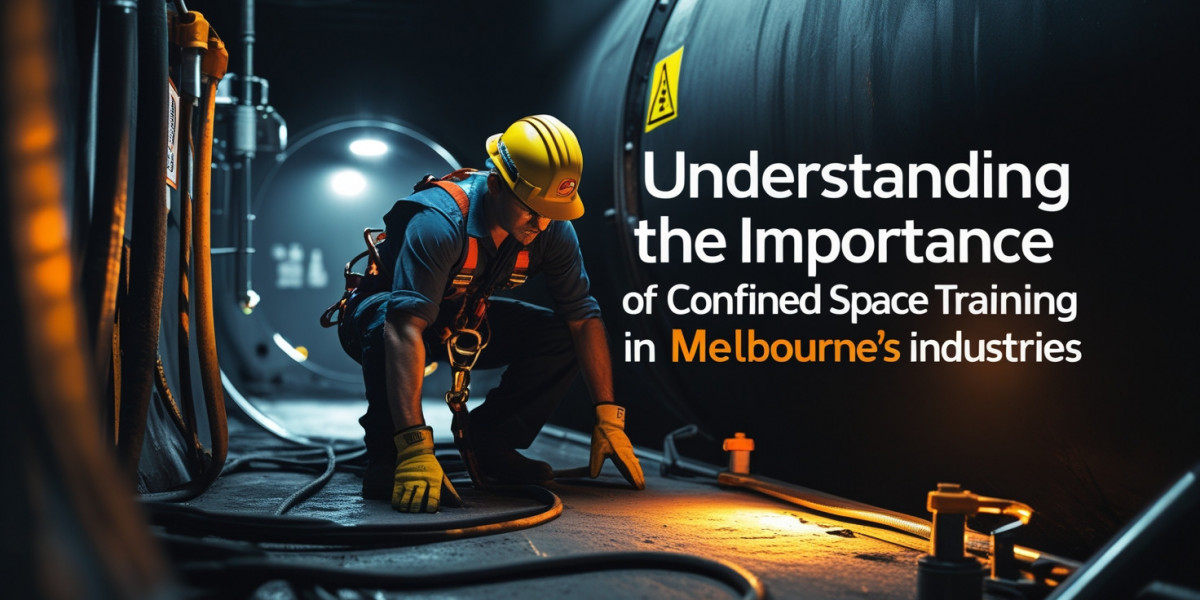Confined spaces present unique challenges and risks in various industries across Melbourne, underscoring the critical need for specialized training programs to ensure worker safety and compliance with regulations.
This article delves into the importance of confined space training in Melbourne industries, exploring the legal requirements, types of hazards, benefits of proper training, key elements of effective programs, real-life case studies, and best practices for implementation. Understanding the intricacies of confined spaces and the necessity for comprehensive training is paramount in fostering a safe and secure work environment for all personnel involved.
Overview of Confined Spaces in Melbourne Industries
Definition of Confined Spaces
In Melbourne industries, confined spaces are like those skinny jeans you regret buying – tight, cramped, and definitely not meant for a comfortable experience. These spaces are areas not designed for continuous occupancy, with limited entry and exit points, and often pose serious risks to those working inside.
Common Confined Spaces in Melbourne Industries
Common confined spaces in Melbourne industries include places like tanks, silos, tunnels, and sewers. Basically, any space that makes you go, "Wow, I definitely can't throw a dance party in here," is likely a confined space.
Legal Requirements for Confined Space Training in Melbourne
Occupational Health and Safety Regulations
In Melbourne, just like how you can't wear socks with sandals without facing judgment, there are strict Occupational Health and Safety regulations when it comes to confined spaces. Employers are required to provide proper training to workers entering these spaces to ensure their safety.
Specific Requirements for Melbourne Industries
Each industry in Melbourne may have its own set of specific requirements when it comes to confined space training. It's like how different coffee shops have their own special blend – except in this case, it's about saving lives, not just making a great latte.
Importance of Confined Space Training for Worker Safety
Risk of Confined Space Incidents
Working in confined spaces without proper training is like trying to juggle flaming torches – it's a disaster waiting to happen. Without the right knowledge, workers are at risk of accidents, injuries, or worse.
Impact of Proper Training on Incident Prevention
Proper confined space training is like having a trusty sidekick – it helps workers identify hazards, use safety equipment effectively, and know what to do in case of emergencies. With the right training, incidents can be prevented, and everyone can go home safe and sound.
Types of Confined Space Hazards in Melbourne Industries
Atmospheric Hazards
Just like you wouldn't want to breathe in toxic fumes at a BBQ gone wrong, atmospheric hazards in confined spaces pose serious risks. These can include lack of oxygen, presence of toxic gases, or flammable atmospheres.
Physical Hazards
Physical hazards in confined spaces are like surprise guests at a party – nobody wants them, but they always show up uninvited. These hazards can include things like moving parts, engulfment risks, or extreme temperatures, making proper training essential to staying safe.
Benefits of Proper Confined Space Training Programs
Enhanced Safety Culture
Proper confined space training fosters a culture of safety within industries in Melbourne, emphasizing the importance of following protocols and procedures to mitigate risks.
Reduced Workplace Accidents
By equipping workers with the necessary skills and knowledge through training, the likelihood of workplace accidents in confined spaces decreases significantly, leading to a safer working environment.
Key Elements of Effective Confined Space Training in Melbourne
Training Curriculum
An effective confined space training program in Melbourne should have a comprehensive curriculum that covers relevant regulations, hazard identification, emergency procedures, and safe entry and exit practices.
Hands-On Practical Exercises
Incorporating hands-on practical exercises into training sessions allows workers to apply theoretical knowledge in simulated confined space environments, enhancing their understanding and preparedness.
Case Studies of Confined Space Incidents in Melbourne
Real-Life Examples of Incidents
Exploring real-life case studies of confined space incidents in Melbourne provides valuable insights into the specific risks and challenges faced, emphasizing the importance of proper training and safety measures.
Lessons Learned from Past Cases
Analyzing past incidents helps in identifying common pitfalls, highlighting the importance of vigilance, communication, and adherence to safety protocols to prevent similar accidents in the future.
Best Practices for Confined Space Training Implementation
Continuous Training and Refresher Courses
To ensure ongoing competency and awareness, implementing regular refresher courses and continuous training programs helps reinforce safe practices and keep workers informed about any updates or changes in regulations.
Engagement of Management and Workers
Engaging both management and workers in the confined space training process fosters a collaborative approach towards safety, encouraging open communication, feedback, and shared responsibility for creating a secure work environment.
Conclusion
prioritizing confined space training in Melbourne industries is not just a legal obligation but a fundamental aspect of maintaining a safe workplace environment. By investing in proper training programs, organizations can mitigate risks, prevent accidents, and protect the well-being of their employees. Through ongoing education, adherence to best practices, and a commitment to safety, Melbourne industries can ensure that their workforce is equipped to navigate confined spaces with confidence and competence.
FAQ
What is confined space training?
Confined space training provides workers with the knowledge and skills necessary to safely enter, work in, and exit confined spaces. This training covers hazard recognition, emergency procedures, and the use of personal protective equipment (PPE) to ensure safety in environments with limited access and potential dangers.
Why is confined space training important in Melbourne's industries?
Melbourne's industries, including construction, manufacturing, and utilities, often involve working in confined spaces where risks such as toxic gases, low oxygen levels, and potential entrapment exist. Proper training is essential to prevent accidents and ensure compliance with safety regulations, protecting both workers and employers.
What are the legal requirements for confined space training in Melbourne?
In Victoria, the Occupational Health and Safety Act requires that employers ensure their workers are adequately trained to perform their jobs safely. This includes providing training for confined spaces, in accordance with the relevant standards and codes of practice set by WorkSafe Victoria.
Who should undergo confined space training?
Any employee who may be required to enter or work in a confined space should undergo confined space training. This includes not only the workers directly entering the space but also supervisors, safety personnel, and emergency responders to ensure a comprehensive understanding of safety protocols.
What topics are typically covered in a confined space training course?
Confined space training courses typically cover topics such as hazard identification, risk assessment, safe entry and exit procedures, emergency response plans, the use of gas detectors and ventilation equipment, and the proper use of PPE. Practical exercises and simulations may also be included to enhance learning.
How often should confined space training be renewed?
Confined space training should be refreshed regularly to ensure that workers remain knowledgeable about safety practices and any changes in regulations or technology. It is generally recommended to renew training every 2-3 years, but employers should also consider refresher training whenever there are significant changes in work practices or after a related incident.








